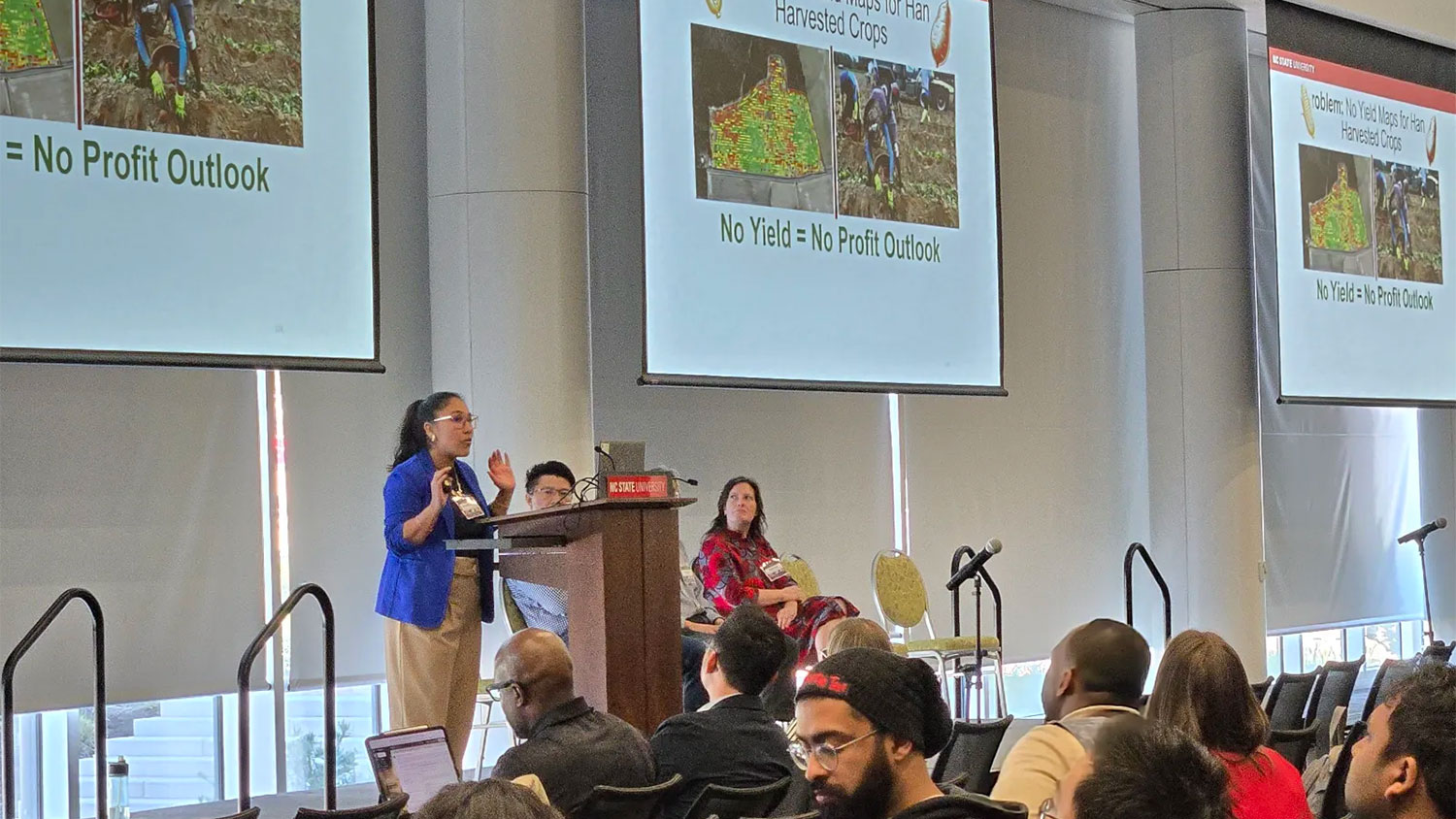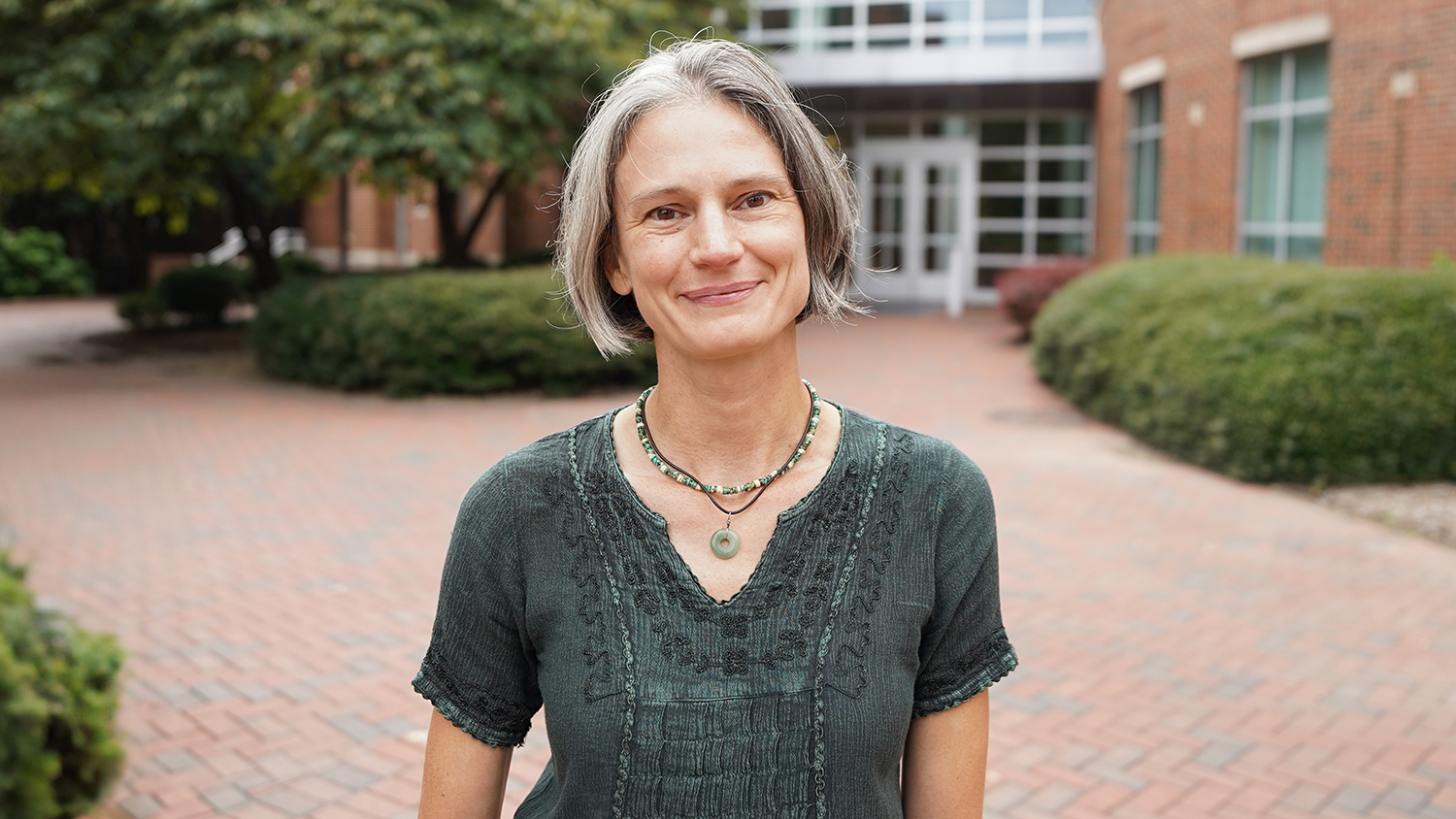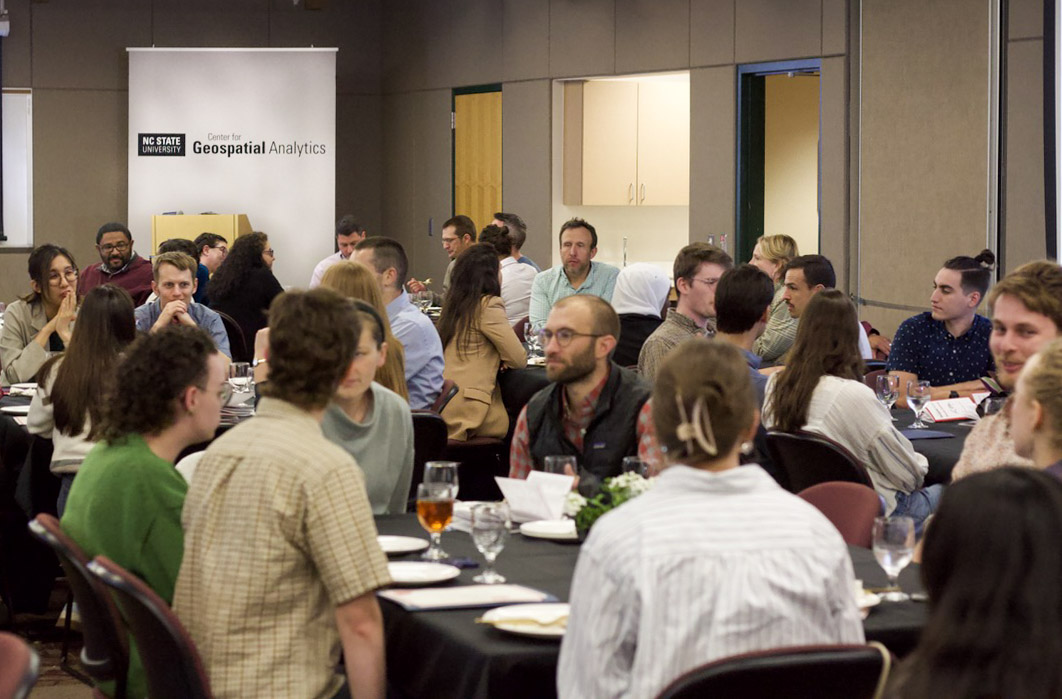Center Faculty Fellows Navigate AI at the 2025 University Research Symposium

The Artificial Intelligence revolution is upon us — or so many agreed at the 2025 University Research Symposium: Research With AI: Navigating A New Age.
Held at the innovative Hunt Library, the event drew a record number of attendees in the history of the research symposiums. Over 200 faculty attendees filled the seats to learn about how their fellow researchers are currently using AI — and explore its evolving potential and applications.
“The purpose of this forum is to foster connections among researchers and scholars,” said Sofia Colón of the Office of Research and Innovation and lead organizer of the event. “The goal is to have attendees forge new partnerships and help shape the future of research at our university.”

Below is a summary of some of the faculty research presented during the symposium, highlighting different ways AI is being used across disciplines at NC State.
Full slide decks and more info are available on the 2025 University Research Symposium website.
AI for Predictive Modeling
The keynote speaker, Terri A. Long, opened the symposium by demonstrating how AI is transforming research in the College of Agriculture and Life Sciences. Long, a professor in the Department of Plant and Microbiology, discussed how CALS researchers are using dynamic modeling to understand how RNA molecules in plant roots respond to iron deficiency. Analyzing data on decay rates through AI predictive modeling, researchers are exploring gene expression patterns and how to engineer plants to better adapt to low-iron conditions.
Jorge Piedrahita of the College of Veterinary Medicine also illustrated how AI algorithmic modeling can be used to identify key proteins for restoring animal gut function. Kevin Flores, in the Department of Mathematics and director of the Biomathematics Graduate Program, demonstrated how medical data can be integrated to create mathematical models and enhance understanding of biological processes, such as cell motility and tumor growth.
AI as a Skilled Pair of Eyes
Daniela Jones, Center for Geospatial Analytics faculty fellow an assistant professor in the Department of Biological and Agricultural Engineering, presented the use of AI with image sensors to improve how to measure harvest yields of sweetpotatoes. North Carolina leads in sweetpotato production, a crop that generated $324 million in 2019. One challenge growers face is that sweetpotatoes grow underground, making it difficult to create yield maps to aid in making profit projections. When AI scanners are positioned over conveyor belts or bins placed on harvesting trucks, they can accurately count harvest yields, helping growers plan storage and fulfill orders.
An assistant professor in the Department of Textile and Apparel Technology and Management, Zahra Saki, described using AI spectroscopy and thermal measurements to identify and classify textile waste to help make recycling processes more efficient. Raju Vatsavai, a professor in the Department of Computer Science and the Geospatial Analytics cluster, explained how drones can collect data for real-time AI analytics to monitor and assess crop yields, aiding in resource management and agricultural planning. Paul Fyfe, an associate professor in the Department of English, showed how AI can be used to create a searchable, visual archive of 19th-century newspaper illustrations.
A Collaborative Tool for Faculty and Students
During the “Collaboration and Ethics in AI” panel, Darby Orcutt, director of interdisciplinary partnerships at NC State University Libraries, suggested thinking of AI as a collaborator.
Likewise, Kristi Cole from the English Department emphasized the concept of treating AI as a partner in student assignments. In the face of widespread concern about students’ over-reliance on AI, Cole suggested assigning projects that require students to reflect on AI as a collaborative tool — an opportunity to develop stronger information literacy and research skills.
The symposium also operated as an exploratory space for learning and sharing. Participants were invited to collaborate with AI in their work and research. Research librarians from the Hunt Library led a hands-on workshop for attendees to explore various AI platforms.


Likewise, Paul Liu of Marine, Earth and Atmospheric Sciences and the Center’s newest faculty fellow, invited participants to learn how to design discipline-centric language models during a two-day training on campus on May 5-8, offered by the Data Science and AI Academy. (The May 1-2 session is full.)
In navigating the new age of AI, the 2025 Research Symposium laid important groundwork: By embracing this technology thoughtfully and proactively, NC State stands at the forefront of the AI revolution, shaping its trajectory of innovation and addressing complex challenges across disciplines.
This article was originally published in NC State News.
- Categories:


